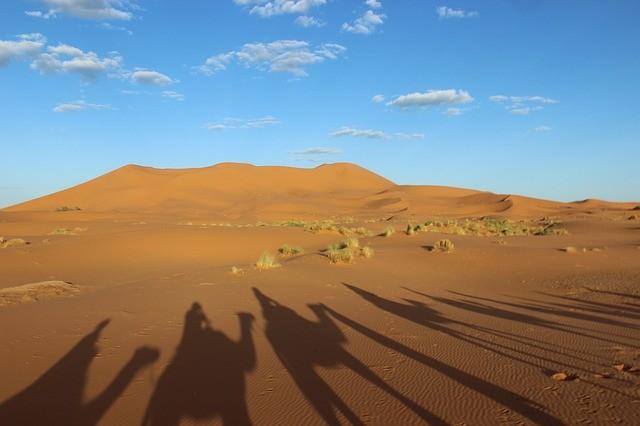
The king of Morocco officially launched the first phase of the world's largest concentrated solar power plant, the Noor Complex. When finished, the complex will provide 500 megawatts of clean, renewable energy to 1.1 million Moroccans, reduce the country’s use of foreign oil by about 2.5 million tons, and lower carbon emissions by 760,000 tons per year.
This could herald a new era of clean energy in this part of the world. The Sahara is a huge swath of sun nearly the size of the United States. If even just a tiny percentage of it were covered with solar panels, it could generate enough power for much of North Africa, especially if coupled with adequate (and increasingly affordable) battery storage to cover the few times a year the sun isn't shining.
“The Noor Solar Complex stands to serve as an example for Africa and the world about how to create effective pathways to greener and more inclusive economies through renewable energy,” said Yacine Fal, with the African Development Bank, one of the financiers of the project, in a press statement.
This plant will be massive when completed, taking up as much space as Morocco's capitol city, Rabat. It happens to be located in one of the poorest regions of the country, and there are hopes that it will provide jobs and economic development to a region in need of it, along with, of course, power. Around 650,000 homes already get power for three hours a day from the plant.
It was not an easy project – with financing coming from numerous international agencies, governments and private investors. The fact that it got done, and is now providing energy to hundreds of thousands, is powerful. This effect will be amplified because Morocco also happens to be the host of the COP22 climate talks later this year, where the details that were agreed upon in Paris last November will be ironed out. Having a symbol of solar ingenuity and political will across the Sahara will certainly be a powerful symbol to the potential of renewable energy to help us meet ambitious global climate goals. Morocco is, in fact, a global leader, ranked one of the top 10 nations taking action against climate change in the 2016 Climate Performance Index.
"What's encouraging is that in all these areas there is a deliberate choice and clear policies that have been spelled out by the government, and they are actually walking the talk in terms of putting the resources and in terms of implementation,” said Marie-Francoise Marie-Nelly, World Bank country director for the region, in a statement.
If North Africa expands its solar production, there are even hopes that it could ship energy to nearby Europe through an integrated grid. This could allow for solar to go to Spain when its most ample renewable source (wind) is low, and vice versa, building resilience and reducing the need for fossil-fuel baseload energy.
One thing is for certain, with the opening of this plant, the future of energy in the Mediterranean is bright. Morocco is showing us all the way forward.
Image credit: Pixabay

Nithin Coca is a freelance journalist who focuses on environmental, social, and economic issues around the world, with specific expertise in Southeast Asia.














